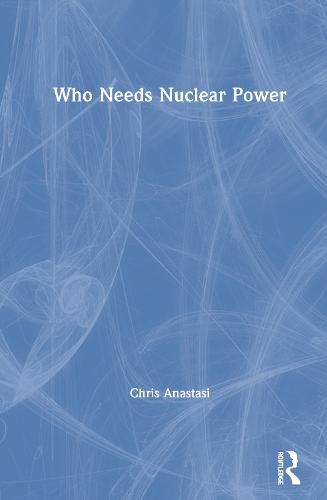Readings Newsletter
Become a Readings Member to make your shopping experience even easier.
Sign in or sign up for free!
You’re not far away from qualifying for FREE standard shipping within Australia
You’ve qualified for FREE standard shipping within Australia
The cart is loading…






Who Needs Nuclear Power challenges conventional thinking about the role of civil nuclear power in a rapidly changing energy context, where new energy carriers are penetrating markets around the world.
Against the backdrop of a global energy transition and the defining issue of Climate Change, Chris Anastasi assesses new nuclear build in a fast-moving sector in which new technologies and practices are rapidly emerging. He considers various countries at different stages of nuclear industry development, and discusses their political, legal and technical institutions that provide the framework for both existing nuclear facilities and new build, as well as a country’s technical capability. He also highlights the critical issue of nuclear safety culture, exploring how organisations go about instilling it and maintaining it in their operations and encouraging it in their supply chains; the critical role played by independent regulators and international institutions in ensuring the integrity of the industry is also highlighted.
This book provides a balanced and holistic view of nuclear power for both an expert and non-expert audience, and a realistic assessment of the potential for this technology over the critical period to 2050 and beyond.
$9.00 standard shipping within Australia
FREE standard shipping within Australia for orders over $100.00
Express & International shipping calculated at checkout
Who Needs Nuclear Power challenges conventional thinking about the role of civil nuclear power in a rapidly changing energy context, where new energy carriers are penetrating markets around the world.
Against the backdrop of a global energy transition and the defining issue of Climate Change, Chris Anastasi assesses new nuclear build in a fast-moving sector in which new technologies and practices are rapidly emerging. He considers various countries at different stages of nuclear industry development, and discusses their political, legal and technical institutions that provide the framework for both existing nuclear facilities and new build, as well as a country’s technical capability. He also highlights the critical issue of nuclear safety culture, exploring how organisations go about instilling it and maintaining it in their operations and encouraging it in their supply chains; the critical role played by independent regulators and international institutions in ensuring the integrity of the industry is also highlighted.
This book provides a balanced and holistic view of nuclear power for both an expert and non-expert audience, and a realistic assessment of the potential for this technology over the critical period to 2050 and beyond.